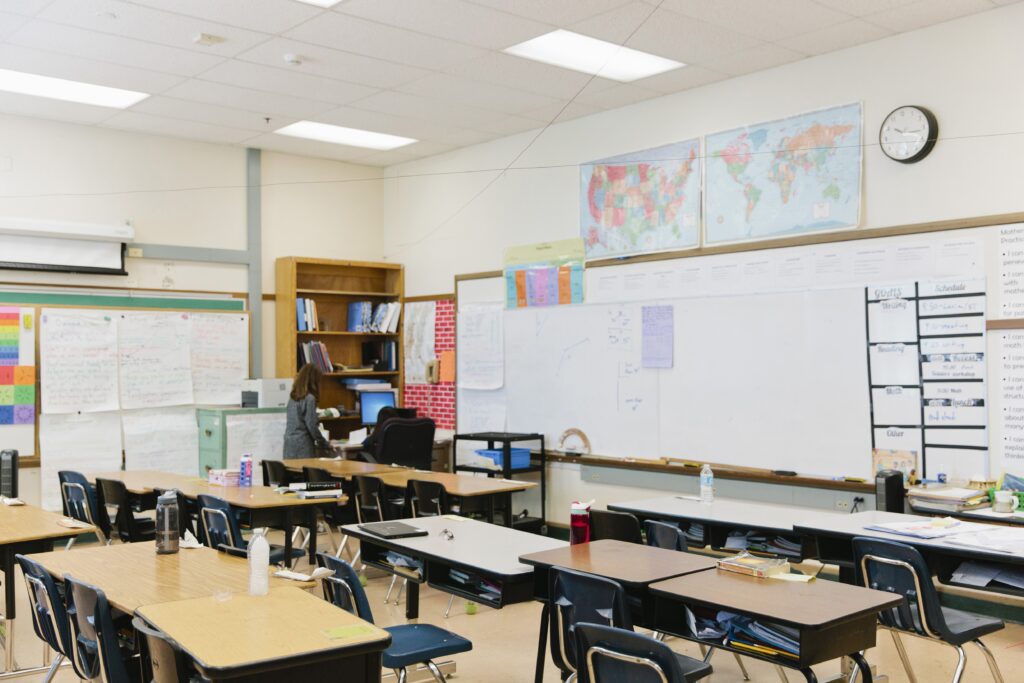Credit: Alison Yin / EdSource
Nearly a quarter of California’s K-12 students missed several weeks’ worth of school during the 2022-23 school year — a decrease of 5 percentage points in chronic absenteeism from the previous school year, but a sign of the lingering effects of the pandemic.
Even as schools re-opened for in-person instruction, chronic absences shot up from 12.1% pre-pandemic to 30% during the 2021-22 school year.
Such a sharp rise has increased discussion about why the absences are occurring. But having a certain number of absences in one school year can lead to various different outcomes for students, and potentially for their parents, depending on how they are recorded.
If recorded as unexcused, the student can be considered chronically truant. If recorded as excused, or as a mix of excused and unexcused, the student can then be considered chronically absent.
But what is the difference between the two, and why does it matter?
This guide aims to clarify those questions and inform both students and parents on the importance of how absences are recorded.
Truancy, habitual truancy, chronic truancy — what is the difference?
California law states that a student is considered truant after three unexcused absences of more than 30 minutes each during a school year.
If a student is reported as truant three or more times during the same school year and a school staff member has made a concerted effort to meet with the student and their parents to discuss the absences, they are then considered habitually truant.
Once a student is habitually truant, they can be referred to a local student attendance review board, or SARB. The SARB will open a case during which the family must sign an attendance contract stipulating their child will attend school regularly.
A student who is labeled as chronically truant has unexcused absences for 10% or more days during the school year. Given that a typical school year totals about 180 days, a student missing 10% of the school year would equal about a month’s worth of instructional time.
It is at this point, once the student is chronically truant, that a school district can refer the case to a district attorney’s office. Once there, the district attorney has the discretion to charge the parent or guardian with an infraction or misdemeanor that could potentially result in fines or jail time for the parent.
How is that different from chronic absenteeism?
The difference is in the way that a student’s absences are reported.
Chronic absenteeism is defined as a student missing 10% or more of the school year — regardless of whether the absences are excused or unexcused.
If a student’s absences are mostly excused, they are more likely to be labeled as chronically absent. If they go unexcused, a student could quickly end up being labeled as truant.
Why does it matter to understand the difference between chronic absenteeism and chronic truancy?
Both chronic absenteeism and chronic truancy include various levels of intervention from schools. Schools ar supposed to check in with students who are missing classes and be offered support to address their basic needs, including meetings with parents to discuss solutions, and more.
But if those interventions do not solve the problem and a student continues missing class, only one of the two — truancy — involves potential fines and jail time for parents.
The involvement of the court system in truancy, but not in absenteeism, is why it is important to understand the difference between the two.
Additionally, information from families regarding student absences can provide school staff with insight into what a student might be experiencing and, in turn, help them better support the family. If the school knows a student is dealing with housing insecurity or transportation issues, for example, it could connect the family with the local homeless liaison, who would then refer them to available resources.
What is considered an excused absence?
California law has a list of over a dozen reasons for excusing an absence. That list includes, but is not limited to:
- Illness, which includes mental and behavioral health
- Quarantine
- Appointments with medical professionals such as optometrists, dentists or physicians
- Funeral services
- Jury duty
- Illness of a student’s child
- Participation in cultural events
The full list of excusable reasons can be found at this link.
Included in the list is the option to excuse an absence at the discretion of a school administrator. For example, a school might know that a child has unstable access to transportation, which results in being late to school or absent. In such cases, a school administrator could excuse the absence without requiring a note.
Is one label worse/better than the other?
Both chronic absenteeism and chronic truancy involve a significant number of student absences, and education experts agree that loss of instructional time negatively impacts students in their academic and personal development. With that in mind, both chronic absenteeism and chronic truancy are considered detrimental to students.
Certain demographics, however, are more likely to have unexcused absences: Black, Native American, Latino, and Pacific Islander students, regardless of socioeconomic status, according to a 2023 PACE report.
The report, Disparities in Unexcused Absences Across California Schools, also found that socioeconomically advantaged students were less likely to have unexcused absences.
In an example provided by the report’s co-author, Hedy Chang, she explained: Two students can be absent from school due to illness but only one of them has health insurance. The student without insurance is less likely to see a doctor and, as a result, less likely to return to school with a doctor’s note. In this example, the student who is socioeconomically disadvantaged has a higher likelihood of reporting an unexcused absence.

